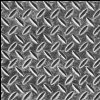Thx for the project.
Yeah the formular is just try and error. The idea was to think of the base noise as a form of heat/cloud bubbles. Then apply some threshold(the coverage) to it. Rescale it to 0..1 range with a steep slope. Invert it and use that as a final coveragemask. Then simply some CSG to build the final cloud volume.








